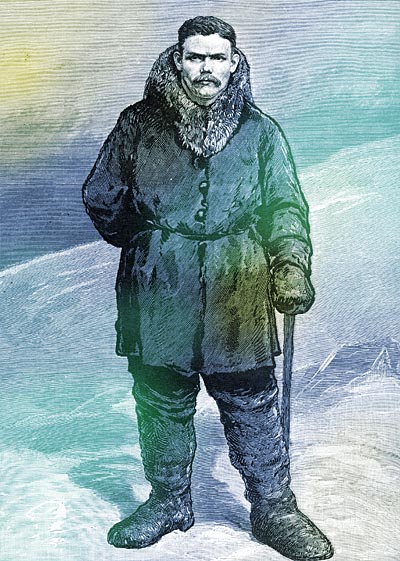
|
THE CREATION OF NADIRIA
An Engineering Marvel
In April of 1859, one hundred and seventy-four colonists left Charleston, SC bound for the staging camp on the coast of Venezuela. After several months of preparation and when the ice floes shrank sufficiently, an armada of ships left for the frigid wasteland of Antarctica. Many years of planning, work, and dreams came to fruition as the colonists arrived at Nadiria, where the Church of Spiritual Commerce was to create a New World. They desired to abandon a world that they believed was morally and intellectually bankrupt and to forge a new civilization where mankind could grow in purity and freedom.
The formal scientific community at this time had not yet discovered the continent of Antarctica. However Constance Brundt, the Dream Prophetess of the Church, had several revelatory dreams that pointed the famous polar explorer Ronald Sutcliffe in the right direction to find the icy continent. It was actually Sutcliffe who first discovered Antarctica, but remains largely unrecognized due to the fact that Nadiria was a secret for so long. It is only recently that Ronald Sutcliffe is getting the recognition he deserves as the man who discovered Antarctica. |
Sutcliffe was responsible for choosing an appropriate location on the Antarctic ice sheet, surveying the location, and for overseeing the construction of the base camp, and of the Colony itself. Following the initial discovery expeditions, there were a number of survey and research expeditions, where the western hemisphere of Antarctica was crudely mapped. The first real step was to build staging camps along the route deep into the interior of the cold continent and then finally a surface village over the spot where construction would commence. At the center of this village, nicknamed "Sutville," was the Shaft Hut, a large and extremely sturdy building that would enclose the top of the central shaft that would provide access to the future colony. With a large, heated, and relatively comfortable hut for the engineers and workmen, construction could continue year round.
First, a large central shaft was sunk using successive charges of Heaven's Fire. Then an insulated, wooden infrastructure was built providing a spiral stairway surrounding an open shaftway for the lowering of equipment, men, and livestock to the lower levels. Once the Central Shaft was completed, teams of men excavated large cavities surrounding it on several levels, descending to a depth of over 1,000 feet. Within these cavities were built additional insulated wooden structures to house the main areas of the Colony itself. Finally, "beltways" provided lateral interconnection of all the sections of the Colony.
At this point, Nadiria was ready for occupancy. A minimal complement of one hundred and twenty-six colonists arrived to begin the arduous task of building a New World. The remaining one hundred and eight colonists remained behind in Venezuela to work the plantation. They would make the crossing to Nadiria in the following year, when Nadiria was made more habitable. The staging camp in Argentina kept the colony supplied with staples such as timber, sheep's wool for insulation, livestock, Heaven's Fire chemicals, and a wide variety of goods. The Southern Star shipping line built a fleet of ships for the sole use of resupplying the Colony. Goods and provisions were shipped from New York and Charleston to Venezuela, where they would be stockpiled until the Antarctic summer in February. Then, every year, a flotilla of supply ships would make the journey to Nadiria for resupply. There was always two years of supplies kept as surplus at Nadiria, in case of the unlikely event of a bad year, where the resupply expedition failed.
The first few years were occupied primarily with survival and making Nadiria livable. But quickly, the colonists adapted and more new arrivals continued to flow into the Colony, and Nadiria grew. Babies were born, and artwork and philosophy started thriving. Samuel and Constance Brundt's dream was coming true.
|